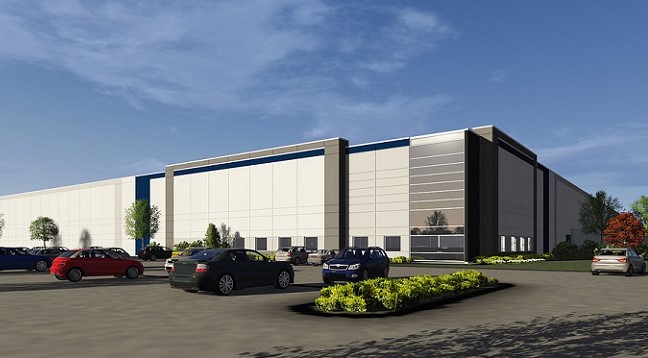 Commerce Farms V, a 652,000-square-foot speculative industrial building being developed by Chicago-based HSA Commercial at Commerce Farms Business Center in suburban Nashville.
Commerce Farms V, a 652,000-square-foot speculative industrial building being developed by Chicago-based HSA Commercial at Commerce Farms Business Center in suburban Nashville.
CHICAGO—Consumers’ use of e-commerce to fulfill their shopping needs has not only shaped the retail sector, it has also caused a seismic shift in the industrial market. Online sales hit $394 billion in 2016, according to Forrester Research, and will rise to $591 billion in 2020 as retailers look to further reduce delivery times. That has sent demand from distributors for a new generation of buildings that can handle this product flow, and experts say this trend will continue in 2017 and beyond.
“Today’s consumers are not only making more of their purchases online, but also expecting them to be delivered in a matter of minutes or hours rather than days,” says Bob Smietana, vice chairman and chief executive officer of HSA Commercial Real Estate. “This so-called ‘Amazon effect’ is fueling industrial leasing and development activity, particularly in distribution hubs with road, rail and runway access, resulting in record-low vacancy rates and rising rents in many markets.”
The US industrial sector has registered 27 consecutive quarters of net occupancy gains, according to a recent report from Cushman & Wakefield. At the end of the third quarter of 2016, vacancy had fallen to just 5.6%, a year-over-year drop of 90 bps, tracking a full 280 bps below the 10-year historical average. And industrial rents increased in 66 of 79 markets tracked by C&W from the third quarter of 2015 to the third quarter of 2016, with over 40% of the country reporting double digit gains. In many markets, industrial rents are now at historic highs.
HSA Commercial currently has three distribution centers – in suburban Nashville, Indianapolis, and Chicago – underway on a speculative basis, or without tenants lined up in advance. “Users small and large, including those from the fast-growing automotive and healthcare sectors, are demanding modern, class A facilities, so we’re in a flight to quality that has resulted in many spec developments filling up before construction is complete,” Smietana says.
And it’s not just new developments that are benefitting from the trend, notes Michael Marconi, managing broker of Transwestern’s industrial practice in Rosemont, IL. “In some submarkets, larger tracts of land are in short supply, making older class B and C assets attractive as a value-add play. Existing properties that may have been overlooked in previous cycles are being updated with additional parking and loading docks, improved lighting, and higher ceilings, allowing investors to raise rents by as much as 50 to 60% and achieve an attractive return at sale.”
Marconi adds that the decline of big-box retail could create additional opportunities for industrial developers. “The final leg of the delivery chain, or ‘last mile,’ has become increasingly dependent on urban warehousing facilities that facilitate same- or next-day delivery. As big-box stores become obsolete as showrooms, some will be converted to modern fulfillment centers due to their flexible floorplates, abundant parking and infill locations.”

















 Copyright © 2024 ALM Global, LLC. All Rights Reserved.
Copyright © 2024 ALM Global, LLC. All Rights Reserved.